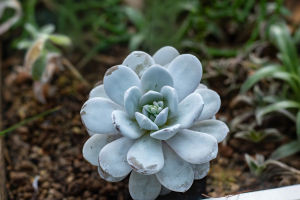Plant Propagation Tips
Do you have plants you love so much you wish you could multiply them? You're in the right place! Propagating plants is a rewarding and sustainable way to grow your collection without buying new ones.
Plus, it deepens your connection with nature. Let's dive into simple, effective ways you can propagate your favorite plants at home.
What Is Plant Propagation?
Plant propagation is the process of creating new plants from parts of existing ones. It can be done through seeds, cuttings, division, layering, or grafting. For most home gardeners, cuttings and division are the easiest methods.
Propagation lets you multiply plants cheaply and enjoy sharing them with friends and family. Also, some plants are hard to find or expensive, so propagation becomes a practical solution.
Choose the Right Plants to Propagate
Not all plants propagate easily, so it's good to start with beginner-friendly varieties. Popular choices include:
• Succulents: Easy to propagate from leaves or stem cuttings.
• Spider plants: Produce baby "pups" that root easily.
• Pothos and philodendrons: Root quickly in water or soil.
• Herbs like mint, basil, and rosemary: Can be grown from cuttings.
• African violets: Can be propagated from leaf cuttings.
Once you know your plant's propagation method, you'll feel more confident and ready to start.
Propagation by Cuttings
This is the most common method, especially for houseplants.
• Select a healthy stem: Choose a branch with at least two or three leaves.
• Cut below a node: The node is where leaves meet the stem; roots grow best from this point.
• Remove lower leaves: Leave a few leaves at the top to support growth.
• Rooting medium: Place the cutting in water or directly into moist soil.
• Wait patiently: Roots should develop within 1-4 weeks depending on the plant.
Pro tip: Use a clear container if rooting in water so you can watch root growth and change water regularly to avoid bacteria.
Propagation by Division
This method is perfect for plants that naturally grow in clumps, such as peace lilies, snake plants, and ferns.
• Remove the plant from its pot gently.
• Separate the root ball into smaller sections, ensuring each division has roots and leaves.
• Pot each division into fresh soil.
• Water and care as usual.
Division refreshes the plant's growth and can create multiple new plants from one.
Propagation by Layering
Layering encourages a plant stem to root while still attached to the parent plant.
• Choose a low-hanging stem.
• Make a small wound or scrape on the underside.
• Bury the wounded part in moist soil or cover with sphagnum moss.
• Secure it in place with a pin or small rock.
• Wait for roots to develop before cutting from the parent plant.
This method works well for shrubs and vines, like jasmine or ivy.
Tips for Successful Propagation
• Use clean tools to prevent infections.
• Provide indirect light for cuttings and young plants.
• Keep humidity high by covering with plastic or placing near a humidifier.
• Avoid overwatering to prevent rot.
• Be patient—not all cuttings root at the same speed.
Remember, failure is part of the learning process. Every attempt teaches you something new.
Why Propagation Matters
Beyond saving money and multiplying plants, propagation connects you closer with nature and promotes sustainability. It reduces the demand for commercially grown plants, which often involve pesticides and transport emissions.
Experts from horticultural research emphasize that home propagation fosters ecological awareness and mental well-being, making it a healthy hobby for all ages.
Final Thoughts: Ready to Multiply Your Greens?
Are you excited to try propagating your favorite plants now? Start small, pick one or two plants, and watch the magic unfold. Soon, you'll have a thriving garden grown with your own hands.
What plants will you propagate first? Share your stories and tips! Growing plants is more fun when we learn and grow together.
Contact to : xyjph123@gmail.com
Privacy Agreement
Copyright © boyuanhulian 2020 - 2022. All Right Reserved.
Privacy Agreement
Copyright © boyuanhulian 2020 - 2022. All Right Reserved.


